By Clare McCarthy, General Sustainability Intern, Office of Sustainability Initiatives
During this Climate Awareness and Women’s History Month, OSI is highlighting some of the many determined women who have made invaluable contributions during key moments in sustainability, environmental justice and climate action history. From delivering speeches to writing books, to founding organizations, each of the following leaders has drawn upon their unique experiences and skillsets to advance environmental justice, climate action, and sustainable development on a global scale.
Rachel Carson: Silent Spring, 1962
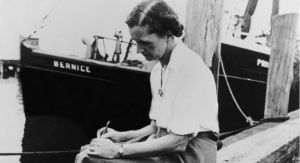
Rachel Carson is recognized as a “social revolutionary” for raising awareness of environmental concerns nationwide. Growing up in rural Pennsylvania, Carson studied English and biology at university. Her unique skill set proved valuable, as she published books, such as Under the Sea-Wind, which presented complex scientific topics in poetic language. She also spent time working as an aquatic biologist in the then-new U.S. Fish and Wildlife Service (USFWS). Carson’s books focused on marine life, but tied in aspects of climate change, from rising sea levels to melting glaciers (Lear, n.d.).
Her last book, Silent Spring (1962), is regarded as the inspiration for the contemporary American environmental movement. Carson had become interested in the impact of pesticides on marine life during her work with the USFWS, and she was especially concerned by the introduction of the DDT pesticide in 1945. Silent Spring exposed the dangers of chemical pesticides, inciting backlash from the agricultural community. Her work spurred the federal government to review its pesticide policy, and Carson was asked to testify to Congress. Eventually, the government banned the use of DDT in the United States (U.S. Fish & Wildlife Service, n.d.). Ultimately, Carson’s powerful writing urged citizens to question public authority and the idea that humans should obtain mastery over nature, providing a “handbook” that has forever shaped the way in which Americans approach environmental issues (Lear, n.d.).
Gaura Devi: Chipko Movement, 1974
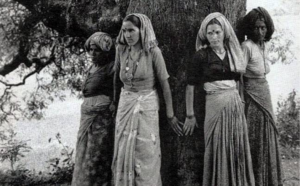
Gaura Devi was a key figure in the now internationally recognized Chipko movement in India, which was inspired by Gandhian nonviolent social action (Yale University, n.d.). In March 1974, she rallied other women in the Raini village in northern India to confront contractors who were sent to cut down the trees in the Himalayan forest. Devi’s opposition was founded upon concerns about the connection between tree felling and the exacerbation of floods and other natural disasters. In a standoff, she compelled the contractors to leave, which became a pivotal movement that served as the base for a national conservation movement. Her actions are credited with the passing of the Indian Forestry Act of 1980 and a 20-year regional ban on the felling of trees above 1,000 meters. Today, the conservation lessons promoted by the Chipko movement can serve to inform climate activism (Regan and Gupta, 2021).
Lois Gibbs: The Grassroots Fight Against Toxic Waste, 1978
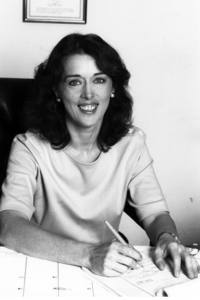
When Lois Gibbs, a housewife with two children, heard reports of leaking chemical waste in her neighborhood, Love Canal in Niagara Falls, New York, she took matters into her own hands. Undeterred by her lack of prior activism experience, she organized her neighbors into the Love Canal Homeowners Association, which lobbied various levels of government to clean up toxic waste in their community. Today, it is known that the neighborhood was located on top of 21,000 tons of buried chemical waste. Between 1942 and 1952, the canal was used as a toxic dump for chemical waste by Hooker Electrochemical Company, one of the first heavy industrial companies that grew up around the natural resource of Niagara Falls.
In response to thousands of letters from Americans across the nation asking how they could address toxic waste in their own communities, Gibbs founded the Citizens Clearinghouse for Hazardous Waste (today called the Center for Health, Environment, and Justice). This grassroots environmental crisis center trains, supports, and empowers thousands of community organizations across the country. Her efforts also contributed to the creation of the U.S. Environmental Protection Agency’s “Superfund,” which is dedicated to cleaning up contaminated lands to protect the health of residents and the environment (The Goldman Environmental Foundation, n.d.).
Gro Harlem Brundtland: The World Commission on Environment and Development, 1983-1987
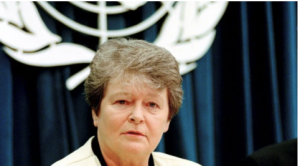
Not only is Dr. Gro Harlem Brundtland an incredibly important figure as Norway’s first female Prime Minister, but she is also a key champion of sustainable development on a global scale. Although she started her career as a public health expert, in 1983, the UN Secretary-General asked her to chair a World Commission on Environment and Development. Under Dr. Brundtland’s leadership, the Commission developed a report which presents recommendations for sustainable development called “Our Common Future.” In Brundtland’s foreword, she writes that a sustainable course of development ultimately amounts to “furthering the common understanding and common spirit of responsibility so clearly needed in a divided world.” The report also posited the definition of “sustainability” that many of us have come to know, ““development which meets the needs of current generations without compromising the ability of future generations to meet their own needs.”
The report led to the United Nations Conference on Environment and Development in Rio de Janeiro in 1992, known as the “Earth Summit” (see the following paragraph about Severn Cullis-Suzuki) (World Health Organization, n.d.). Thus, among Dr. Brundtland’s many remarkable accomplishments, she has shaped history as a global leader of sustainable development.
Severn Cullis-Suzuki: United Nations Conference on Environment and Development in Rio de Janeiro, 1992
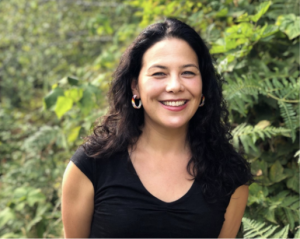
The United Nations Conference on Environment and Development in Rio de Janeiro, known as the “Earth Summit,” convened representatives from 179 countries to discuss the impact of human socio-economic activities on the environment, with the objective to produce a blueprint that would guide sustainable development policy in the 21st century. Several achievements came out of the Summit, such as the United Nations Framework Convention on Climate Change (United Nations, n.d.).
Twelve-year-old Canadian, Severn Cullis-Suzuki, was invited to speak at the conference as the founder of the Environmental Children’s Organization. She was undoubtedly one of the most memorable speakers of the conference. Her powerful speech calls on adults to “make [their] actions reflect [their] words” by acting on environmental crises to protect the future of their children. Her poignant ideas and matter-of-fact tone caused her to be widely regarded as “the girl who silenced the world for five minutes.”
After the conference, Severn has continued her advocacy work. As a teenager, she was appointed to work on the Earth Charter, a set of guidelines “powering a global movement towards a more just, sustainable and peaceful world.” She has served as a special advisor to the UN Secretary General during the 2002 World Summit on Sustainable Development, participated in various speaking tours on issues such as nuclear power, and collaborated to produce nature documentaries. She continues to encourage and inspire youth to take ownership of reminding adults of their responsibility to take action for their children’s futures (Cullis-Suzuki, n.d.).
These incredible women changed the course of history during pivotal moments in sustainability, environmental justice, and climate movements, from alerting the world to the dangers of pesticides to paving the way for global sustainable development. However, these women are not the only key contributors to historical movements protecting the health of the planet and its people. Learn the names and stories of some of other, lesser-known, but no less important leaders here.
Works Cited:
Chipko Movement. (n.d.). Yale University. Retrieved from https://fore.yale.edu/World-Religions/Hinduism/Engaged-Projects/Chipko-Movement
Cullis-Suzuki, S. (n.d.). Bio. Retrieved from https://severncullissuzuki.com/bio/
Dr Gro Harlem Brundtland, Director-General. (n.d.). World Health Organization. Retrieved from https://www.who.int/dg/brundtland/bruntland/en/
Google Doodle honours Chipko Movement on its 45th anniversary. (2018). National Informatics Centre. Retrieved from http://ddnews.gov.in/people/google-doodle-honours-chipko-movement-its-45th-anniversary
Lear, L. (n.d.). The life and legacy of Rachel Carson. Retrieved from https://rachelcarson.org/
Lois Gibbs: 1990 Goldman Prize Recipient. (n.d.). The Goldman Environmental Foundation. Retrieved from https://www.goldmanprize.org/recipient/lois-gibbs/
Mother of Sustainable Development. (2017). Permanent Mission of Norway to the United Nations. Retrieved from https://www.norway.no/en/missions/un/norway-and-the-un/norways-rich-history-at-the-un/important-norwegians-in-un-history/gro/
Rachel Carson Biography. (n.d.). U.S. Fish & Wildlife Service. Retrieved from https://www.fws.gov/refuge/rachel_carson/about/rachelcarson.html
Regan, H. & Gupta, S. (2021). Famous for its tree huggers, village at center of India glacier collapse warned of impending disaster for decades. No one listened. CNN. Retrieved from https://edition.cnn.com/2021/02/12/asia/india-glacier-raini-village-chipko-intl-hnk/index.html
United Nations Conference on Environment and Development, Rio de Janeiro, Brazil, 3-14 June 1992. (n.d.). United Nations. Retrieved from https://www.un.org/en/conferences/environment/rio1992
